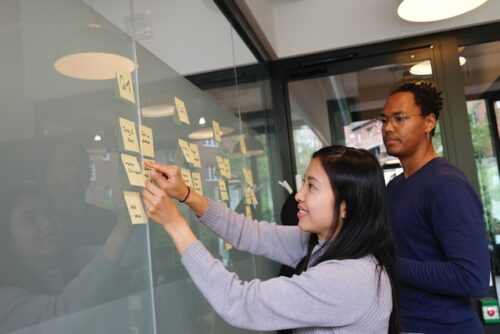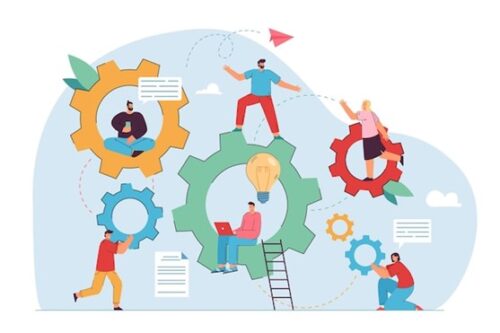In today’s competitive business landscape, organizations are constantly seeking ways to enhance customer satisfaction and improve team performance. One powerful tool that can help achieve these goals is the HBDI Assessment and Debrief. The HBDI, which stands for Herrmann Brain Dominance Instrument, is a scientifically validated assessment that measures thinking preferences. By understanding the thinking styles of individuals within a team, organizations can effectively leverage their strengths to drive customer satisfaction. In this article, we will explore the benefits of HBDI Assessment and Debrief, and how it can maximize the potential of your team.
Understanding the HBDI Assessment
The HBDI Assessment is based on the concept of Whole Brain Thinking, developed by Ned Herrmann. It examines four different thinking preferences: Analytical, Sequential, Interpersonal, and Imaginative. These four quadrants represent different cognitive styles, and individuals tend to have a dominant preference in one or more of these areas. By identifying an individual’s thinking preferences, the HBDI Assessment provides valuable insights into their cognitive strengths and potential areas for development.
The assessment itself consists of a series of questions that examine an individual’s preferences in various situations. It takes into account both the person’s natural thinking style and their adaptability to different thinking modes. The results are then analyzed to generate a profile that depicts the individual’s thinking preferences. This profile serves as a foundation for the subsequent debrief session.
Benefits of HBDI Assessment and Debrief
The benefits of HBDI Assessment and Debrief are numerous and can have a significant impact on customer satisfaction. Firstly, by understanding the thinking preferences of team members, organizations can effectively assign tasks and projects that align with their strengths. This leads to increased productivity and higher quality outcomes. Moreover, by creating a diverse team that encompasses different thinking styles, organizations can foster innovation and creativity, which are essential for staying ahead in today’s rapidly changing business environment.
Furthermore, HBDI Assessment and Debrief can enhance communication and collaboration within a team. By recognizing and appreciating the different thinking styles of team members, individuals can tailor their communication and interaction strategies to ensure effective collaboration. This leads to improved teamwork, reduced conflicts, and ultimately, enhanced customer satisfaction.
How HBDI Assessment and Debrief can benefits customer satisfaction
Customer satisfaction is the cornerstone of any successful business. By utilizing the insights gained from HBDI Assessment and Debrief, organizations can optimize their team’s performance to deliver exceptional customer experiences. For example, if a customer values detailed analysis and problem-solving, a team member with a strong Analytical thinking preference can be assigned to handle their inquiries or provide solutions. On the other hand, if a customer appreciates innovative ideas and out-of-the-box thinking, team members with a dominant Imaginative thinking preference can be involved in developing creative solutions. By aligning the team’s thinking preferences with the needs and preferences of the customer, organizations can enhance customer satisfaction and loyalty.
Additionally, HBDI Assessment and Debrief can help organizations identify and address potential gaps in their team’s capabilities. For instance, if the team lacks individuals with strong Interpersonal thinking preferences, which are crucial for building relationships with customers, organizations can implement training or recruitment strategies to fill this gap. By strategically aligning the team’s thinking preferences with the customer’s needs, organizations can ensure that every customer interaction is personalized, effective, and ultimately leads to high levels of customer satisfaction.
Maximizing the potential of your team with HBDI Assessment
HBDI Assessment and Debrief provide organizations with a powerful tool for maximizing the potential of their teams. By understanding the thinking preferences of team members, organizations can create an environment that fosters collaboration, innovation, and continuous growth. Here are some ways in which HBDI Assessment and Debrief can be used to maximize team potential:
- Task Assignment: By aligning tasks with individuals’ thinking preferences, organizations can ensure that team members are working on projects that leverage their strengths. This leads to increased job satisfaction and higher levels of productivity.
- Team Building: HBDI Assessment and Debrief can be used to build diverse teams that encompass different thinking preferences. This diversity promotes creativity and innovation, as team members bring unique perspectives and approaches to problem-solving.
- Communication and Collaboration: Understanding the thinking preferences of team members allows individuals to adapt their communication and collaboration strategies accordingly. This leads to improved teamwork, reduced conflicts, and more effective problem-solving.
- Training and Development: HBDI Assessment and Debrief can identify areas for development and training opportunities for team members. By investing in their professional growth, organizations can enhance individual and team performance.
Steps to conduct an effective HBDI Assessment and Debrief
To conduct an effective HBDI Assessment and Debrief, organizations should follow a structured approach. Here are the steps involved:
- Preparation: Define the objectives of the assessment and debrief session. Communicate the purpose and benefits to the team members to ensure their active participation.
- Administration: Administer the HBDI Assessment to team members. Ensure that the assessment is conducted in a quiet and distraction-free environment to obtain accurate results.
- Data Analysis: Analyze the assessment results to generate individual profiles. Identify the dominant thinking preferences and any potential areas for development.
- Debrief Session: Schedule a debrief session with each team member to discuss their individual profiles. Provide a detailed explanation of the thinking preferences and their implications. Encourage open discussions and address any questions or concerns.
- Action Planning: Collaborate with team members to develop action plans that leverage their strengths and address any development areas. Provide support and resources to help them implement the action plans effectively.
- Follow-up and Evaluation: Regularly review and evaluate the progress of team members. Provide ongoing support and guidance to ensure the implementation of the action plans and track the impact on team performance.
HBDI Assessment and Debrief training programs
To effectively implement HBDI Assessment and Debrief within an organization, it is essential to provide training programs. These programs equip individuals with the knowledge and skills required to administer the assessments and conduct debrief sessions effectively. The training programs cover topics such as the principles of Whole Brain Thinking, the science behind the HBDI Assessment, and facilitation techniques for debrief sessions. By investing in these training programs, organizations can build internal expertise and ensure the successful integration of HBDI Assessment and Debrief into their talent management processes.
Choosing the right HBDI Assessment and Debrief provider
When selecting a provider for HBDI Assessment and Debrief, organizations should consider the following factors:
- Experience and Expertise: Choose a provider with a proven track record and extensive experience in administering HBDI Assessments and conducting debrief sessions. Look for certifications and testimonials from satisfied clients.
- Customization and Flexibility: Ensure that the provider offers customized solutions that align with your organization’s specific needs and objectives. Flexibility in terms of assessment administration, debrief formats, and training options is crucial for a successful implementation.
- Support and Resources: Look for providers that offer ongoing support and resources to assist with the implementation and follow-up of HBDI Assessment and Debrief. This includes access to additional tools, materials, and guidance for maximizing the impact on team performance.
- Cost-effectiveness: Consider the cost-effectiveness of the provider’s offerings. Compare pricing structures and evaluate the value provided in terms of training programs, support, and resources.
Conclusion
In conclusion, HBDI Assessment and Debrief offer organizations a powerful tool for boosting customer satisfaction and maximizing the potential of their teams. By understanding the thinking preferences of team members, organizations can optimize task assignments, enhance communication and collaboration, and identify areas for development. Implementing HBDI Assessment and Debrief requires a structured approach, including training programs and selecting the right provider. With the insights gained from HBDI Assessment and Debrief, organizations can create exceptional customer experiences, drive innovation, and stay ahead in today’s competitive business landscape. Take advantage of the Whole Brain Thinking System and unlock your team’s full potential today.
We offer individuals and organizations the opportunity to use the Whole Brain Thinking System to determine their thinking preferences. Contact WHS and Training Compliance Solutions to learn more about benefits of Herrmann Brain Dominance Instrument-HBDI Assessment and Debrief can boost customer satisfaction and maximize your team’s potential.












